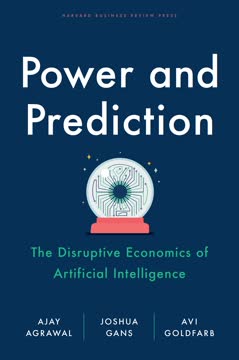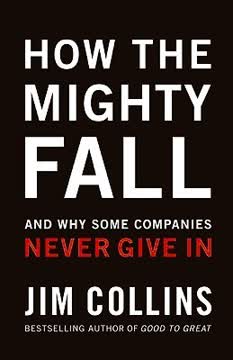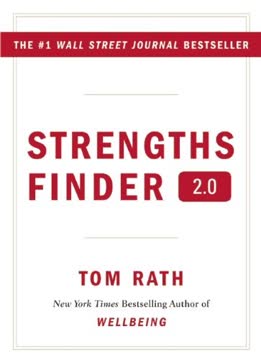Key Takeaways
1. Discover and leverage your innate talents for personal and professional success
"You cannot be anything you want to be—but you can be a lot more of who you already are."
Embrace your natural talents. Each person possesses a unique set of innate talents that, when properly nurtured and developed, can lead to exceptional performance and fulfillment. These talents are stable personality traits that emerge early in life and persist throughout adulthood. By identifying and focusing on these inherent strengths, individuals can achieve far greater success than by attempting to become something they are not.
Maximize your potential. The key to personal and professional growth lies in recognizing and cultivating your natural talents. Instead of trying to fit into roles or pursue goals that don't align with your innate abilities, concentrate on areas where you have the greatest potential for excellence. This approach not only leads to higher levels of achievement but also results in greater job satisfaction and overall well-being.
Examples of innate talents:
- Analytical thinking
- Relationship building
- Strategic planning
- Creative problem-solving
- Empathetic communication
2. Focus on developing strengths rather than fixing weaknesses
"People have several times more potential for growth when they invest energy in developing their strengths instead of correcting their deficiencies."
Shift your perspective. Traditional approaches to personal and professional development often emphasize identifying and addressing weaknesses. However, research shows that focusing on strengths yields far greater returns. By redirecting energy and resources towards areas of natural talent, individuals can achieve exponential growth and performance improvements.
Invest in your strengths. Rather than spending excessive time and effort trying to overcome limitations, dedicate yourself to honing and refining your innate abilities. This strengths-based approach not only leads to better outcomes but also increases engagement, motivation, and overall satisfaction. While it's important to manage weaknesses to a functional level, the greatest potential for excellence lies in leveraging and developing your unique strengths.
Benefits of focusing on strengths:
- Increased productivity and performance
- Higher levels of engagement and job satisfaction
- Greater sense of fulfillment and purpose
- Improved well-being and reduced stress
- Enhanced creativity and innovation
3. Understand the 34 talent themes and how they manifest in individuals
"The 34 themes represent our best attempt at creating a common language or classification of talents."
Explore the talent themes. The StrengthsFinder assessment identifies 34 distinct talent themes, each representing a cluster of related natural patterns of thought, feeling, or behavior. These themes provide a framework for understanding and articulating individual strengths. By familiarizing yourself with these themes, you can gain deeper insights into your own talents and those of others.
Recognize talent manifestations. Each talent theme can manifest in various ways depending on the individual and their experiences. For example, someone with the Communication theme might excel in public speaking, while another with the same theme might be a gifted writer. Understanding these nuances helps in appreciating the diversity of strengths within each theme and how they can be applied in different contexts.
Examples of talent themes:
- Achiever: driven to accomplish and produce
- Adaptability: flexible and comfortable with change
- Analytical: searches for reasons and causes
- Empathy: senses and understands others' feelings
- Strategic: creates alternative ways to proceed
4. Use the StrengthsFinder assessment to identify your top five themes
"StrengthsFinder 2.0 picks up where the first version left off, and it is designed to provide you with the latest discoveries and strategies for application."
Take the assessment. The StrengthsFinder 2.0 assessment is a powerful tool for uncovering your dominant talent themes. By completing this online questionnaire, you'll receive a personalized report identifying your top five themes. This information serves as a starting point for understanding and developing your unique strengths profile.
Interpret your results. Once you've identified your top five themes, take time to reflect on how they manifest in your life and work. Consider specific instances where you've excelled or felt most energized, and examine how these experiences align with your dominant themes. This self-reflection process is crucial for translating your assessment results into actionable insights for personal and professional growth.
Steps to leverage your StrengthsFinder results:
- Complete the online assessment
- Review your personalized report
- Reflect on how your themes manifest in your life
- Identify opportunities to apply your strengths
- Develop strategies to further refine your talents
5. Apply your strengths in the workplace to increase engagement and productivity
"People who do have the opportunity to focus on their strengths every day are six times as likely to be engaged in their jobs and more than three times as likely to report having an excellent quality of life in general."
Align roles with strengths. Seek out opportunities in your current job or future career moves that allow you to utilize your dominant talents regularly. When individuals are able to apply their strengths daily, they experience higher levels of engagement, productivity, and job satisfaction. This alignment not only benefits the employee but also contributes to overall organizational success.
Customize your approach. Once you understand your strengths, tailor your work methods and strategies to leverage them effectively. For example, if you have strong Ideation talents, create time for brainstorming and creative problem-solving. If Relationship Building is a strength, focus on networking and collaborative projects. By customizing your approach, you can maximize your impact and enjoyment at work.
Ways to apply strengths at work:
- Volunteer for projects that align with your talents
- Propose new initiatives that leverage your strengths
- Collaborate with colleagues whose strengths complement yours
- Adapt your work processes to suit your natural talents
- Communicate your strengths to your manager and team
6. Build complementary partnerships based on diverse strengths
"You cannot be anything you want to be—but you can be a lot more of who you already are."
Embrace diversity. Recognize that no individual possesses all the necessary talents to excel in every aspect of work or life. Instead of trying to become well-rounded, focus on partnering with others whose strengths complement your own. This approach allows each person to contribute their unique talents, resulting in more effective and innovative outcomes.
Create synergistic teams. When forming teams or collaborating on projects, intentionally seek out individuals with diverse strengths. By bringing together people with different talent profiles, you can create a more balanced and capable group. This diversity not only leads to better problem-solving and creativity but also allows each team member to focus on what they do best.
Benefits of complementary partnerships:
- Enhanced problem-solving capabilities
- Increased innovation and creativity
- More efficient use of individual talents
- Improved team dynamics and collaboration
- Greater overall productivity and performance
7. Create a strengths-based culture in organizations for better performance
"When you bring your best self to work, it shines through in your performance and radiates to others."
Shift organizational focus. Encourage leaders and managers to adopt a strengths-based approach to talent management and development. This involves moving away from traditional deficit-based models that emphasize fixing weaknesses, and instead fostering a culture that celebrates and leverages individual strengths. By doing so, organizations can create more engaged, productive, and satisfied employees.
Implement strengths-based practices. Integrate strengths-based principles into various aspects of organizational life, including hiring, performance management, and professional development. This might involve using strengths assessments in the recruitment process, incorporating strengths discussions into regular performance reviews, and designing training programs that help employees develop their unique talents.
Steps to create a strengths-based culture:
- Educate leaders and managers on strengths-based principles
- Incorporate strengths assessments into talent management processes
- Encourage open discussions about individual and team strengths
- Align roles and responsibilities with employee strengths
- Recognize and reward strengths-based contributions and achievements
8. Embrace your unique combination of talents to achieve excellence
"Excellence, not average, is your measure."
Celebrate your uniqueness. Understand that your specific combination of talents is what sets you apart and gives you the potential for true excellence. Rather than striving to be well-rounded or comparing yourself to others, focus on developing and applying your unique strengths in ways that allow you to stand out and make a significant impact.
Pursue mastery. Instead of settling for competence across a broad range of skills, aim for mastery in areas aligned with your natural talents. By investing time and effort in refining your strengths, you can achieve levels of performance that far exceed what would be possible by focusing on weaknesses or attempting to be good at everything.
Strategies for embracing your unique talents:
- Identify specific ways your talent themes combine to create unique strengths
- Seek out roles and projects that allow you to showcase your distinctive abilities
- Develop a personal brand based on your unique strengths profile
- Continuously challenge yourself to reach new levels of excellence in your areas of talent
- Share your unique perspective and approach with others to add value in your field
9. Manage weaknesses by partnering with others or finding compensatory strategies
"Find a friend or colleague who also has powerful Futuristic talents. Set aside an hour each month for 'future' discussions. You can push each other to greater heights of creativity and vividness."
Acknowledge limitations. While focusing on strengths is crucial, it's also important to recognize and address areas of weakness that might hinder your overall effectiveness. Instead of expending excessive energy trying to turn weaknesses into strengths, adopt strategies to manage or mitigate their impact.
Develop compensatory strategies. Find ways to work around your weaknesses by leveraging your strengths or external resources. This might involve delegating tasks that don't align with your talents, partnering with colleagues who possess complementary strengths, or developing systems and processes that help you manage areas of lesser ability.
Approaches to managing weaknesses:
- Partner with colleagues who excel in areas where you struggle
- Develop routines and systems to compensate for areas of weakness
- Delegate tasks that don't align with your strengths when possible
- Use technology or tools to support areas of lesser ability
- Seek training or education to bring weaknesses to a functional level
10. Continuously refine and invest in your strengths for long-term growth
"Your greatest worth as a team member might be helping others set goals."
Commit to ongoing development. Recognizing and leveraging your strengths is not a one-time event but an ongoing process of growth and refinement. Continuously seek opportunities to deepen your understanding of your talents and find new ways to apply them in various contexts. This commitment to lifelong learning and development ensures that you remain adaptable and continue to maximize your potential throughout your career.
Seek feedback and reflection. Regularly reflect on your experiences and seek feedback from others to gain insights into how you can more effectively apply your strengths. This process of continuous improvement allows you to fine-tune your approach and discover new dimensions of your talents. Additionally, stay informed about developments in your field and explore how your strengths can be applied to emerging challenges and opportunities.
Strategies for ongoing strength development:
- Set specific goals for applying and refining your strengths
- Seek out mentors or coaches who can provide guidance on leveraging your talents
- Participate in professional development activities aligned with your strengths
- Experiment with new ways of applying your talents in different contexts
- Regularly reassess your strengths profile to track growth and identify new areas for development
Last updated:
FAQ
What's "Strengths Finder 2.0" by Tom Rath about?
- Focus on Strengths: "Strengths Finder 2.0" is centered on identifying and developing individual strengths rather than focusing on weaknesses.
- Assessment Tool: The book includes access to the Clifton StrengthsFinder assessment, which helps readers discover their top five strengths.
- Application of Strengths: It provides strategies and action plans for applying these strengths in personal and professional settings.
- Research-Based: The book is based on Gallup's extensive research on human strengths and employee engagement.
Why should I read "Strengths Finder 2.0"?
- Personal Development: It offers insights into personal strengths, helping you understand and leverage them for growth.
- Professional Growth: By focusing on strengths, you can enhance job performance and satisfaction.
- Actionable Strategies: The book provides practical ideas for applying strengths in various aspects of life.
- Community and Workplace Impact: It encourages creating strength-based environments, improving engagement and productivity.
What are the key takeaways of "Strengths Finder 2.0"?
- Strengths Over Weaknesses: People grow more by focusing on their strengths rather than fixing weaknesses.
- Unique Strengths: Everyone has a unique combination of strengths that can be identified and developed.
- Engagement and Productivity: Focusing on strengths leads to higher engagement and better quality of life.
- Action-Oriented: The book emphasizes taking action to apply strengths in daily life.
How does the Clifton StrengthsFinder assessment work?
- Online Assessment: The assessment is taken online using a unique access code provided with the book.
- Identifies Top Strengths: It identifies your top five strengths from a list of 34 themes.
- Time-Limited Responses: Each question must be answered within 20 seconds to capture instinctual responses.
- Personalized Insights: Results include personalized insights and action plans based on your strengths.
What are some examples of the 34 themes in "Strengths Finder 2.0"?
- Achiever: Describes a constant need for achievement and productivity.
- Activator: Focuses on turning thoughts into action and making things happen.
- Adaptability: Emphasizes living in the moment and being flexible to change.
- Analytical: Involves a logical approach to understanding patterns and data.
How can I apply my strengths according to "Strengths Finder 2.0"?
- Set Goals: Align your strengths with personal and professional goals for better outcomes.
- Collaborate Effectively: Partner with others whose strengths complement yours.
- Continuous Learning: Use your strengths to guide your learning and development.
- Strengths-Based Planning: Create action plans that leverage your strengths in various situations.
What is the significance of the "Strengths Discovery and Action-Planning Guide"?
- In-Depth Analysis: Provides a detailed analysis of your strengths and how they manifest in your life.
- Actionable Ideas: Offers 50 specific actions to take based on your top five strengths.
- Personalized Development: Helps you build a strengths-based development plan.
- Resourceful Website: Includes access to a companion website with additional resources and community support.
How does "Strengths Finder 2.0" suggest managing weaknesses?
- Awareness: Recognize areas of lesser talent to avoid potential roadblocks.
- Avoidance: If possible, steer clear of tasks that require your weaker talents.
- Partnerships: Collaborate with others who have strengths in your areas of weakness.
- Systems and Tools: Use systems or tools to manage tasks that involve your weaknesses.
What are some of the best quotes from "Strengths Finder 2.0" and what do they mean?
- "You cannot be anything you want to be—but you can be a lot more of who you already are." This emphasizes focusing on enhancing your natural strengths rather than trying to become something you're not.
- "The key to human development is building on who you already are." It highlights the importance of personal growth through leveraging existing strengths.
- "Our natural talents and passions—the things we truly love to do—last for a lifetime." This suggests that true fulfillment comes from nurturing and using your innate talents.
How does "Strengths Finder 2.0" relate to employee engagement?
- Strengths Focus: Employees who focus on their strengths are more engaged and productive.
- Manager's Role: Managers who emphasize strengths can significantly reduce active disengagement.
- Organizational Impact: Strengths-based development can transform workplace culture and improve overall performance.
- Engagement Statistics: Gallup's research shows that focusing on strengths leads to higher job satisfaction and quality of life.
What is the role of the "Strengths Community" in "Strengths Finder 2.0"?
- Supportive Network: Provides a platform for individuals to connect and share experiences related to strengths.
- Resource Sharing: Offers access to discussion guides, activities, and downloadable content.
- Continuous Learning: Encourages ongoing development and application of strengths.
- Community Engagement: Fosters a sense of belonging and collaboration among like-minded individuals.
How does "Strengths Finder 2.0" address the concept of "blind spots"?
- Awareness of Talents: Recognize how dominant talents can sometimes lead to blind spots.
- Potential Limitations: Understand the limitations that come with certain strengths.
- Action Items: Use the book's action items to mitigate the impact of blind spots.
- Continuous Improvement: Stay vigilant and open to feedback to address and manage blind spots effectively.
Review Summary
StrengthsFinder 2.0 receives mixed reviews. Many find it helpful for identifying personal strengths and improving workplace dynamics. The online assessment is praised for accuracy but criticized for limited access. Some view the book as a scam, mainly serving as a vehicle for the test code. Critics argue the strengths concept lacks scientific backing. Positive reviewers appreciate the focus on developing natural talents rather than fixing weaknesses. The book's organization and practical suggestions are generally well-received, though some find the content repetitive and overpriced.
Similar Books


![Zero to One, Start Now Get Perfect Later, Shoe Dog A Memoir by the Creator of Nike, [Hardcover] Crushing It 4 Books Collection Set Summary](https://images.sobrief.com/social/cover_zero-to-one-start-now-get-perfect-later-shoe-dog-a-memoir-by-the-creator-of-nike-hardcover-crushing-it-4-books-collection-set_360px_1747184952.jpg)





Download PDF
Download EPUB
.epub digital book format is ideal for reading ebooks on phones, tablets, and e-readers.









